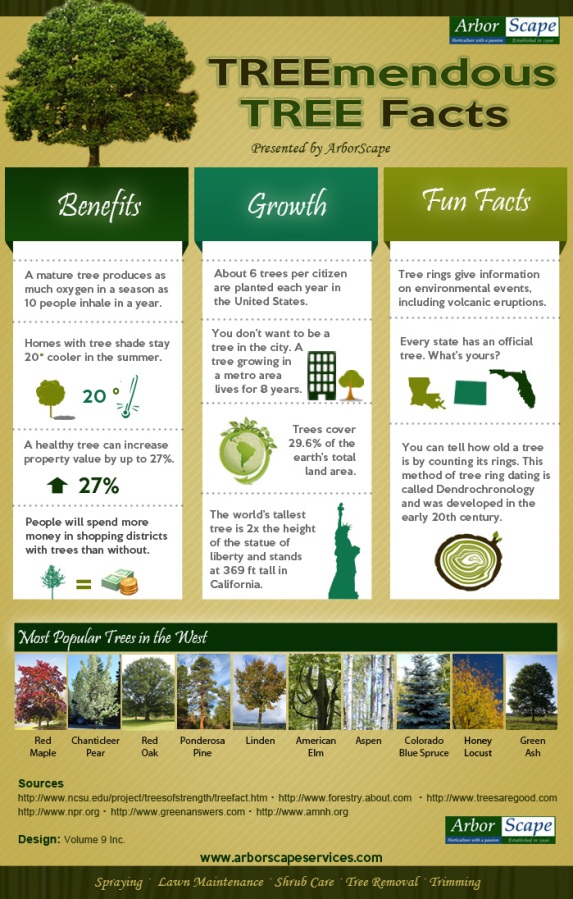Seasonal Tree Maintenance: Guidelines For Managing Trees Prior To And After They Are Eliminated
Seasonal Tree Maintenance: Guidelines For Managing Trees Prior To And After They Are Eliminated
Blog Article
Short Article Composed By-
When it pertains to seasonal tree treatment, guaranteeing appropriate administration before and after elimination can considerably affect the health and wellness and aesthetic appeals of your landscape. By understanding the required actions associated with assessing tree health and wellness and preparing for elimination, you can proactively safeguard your residential or commercial property. However what about the crucial techniques to adhere to as soon as the tree is gone? Stay tuned to uncover the essential post-removal treatment procedures that will certainly aid you grow a successful and sustainable setting for your trees.
Pre-Removal Tree Care
Before resolving the removal of a tree, it's crucial to focus on pre-removal tree treatment. Start by analyzing the tree's wellness and architectural stability. Seek indicators of disease, bug invasions, or any architectural issues that might posture a safety hazard throughout elimination. It's vital to speak with a qualified arborist to identify the best strategy.
Trimming dead or infected branches can protect against more damage to the tree and make sure a smoother removal procedure.
Additionally, think about the environmental impact of eliminating the tree. Trees play a vital duty in our ecological community, so growing a new tree in a suitable area can help balance out any kind of loss. Make certain that you have the needed permits and consents for tree removal, particularly if the tree is protected by regional policies.
Seasonal Maintenance Tips
Examining your tree's demands throughout the year is important for its health and longevity. To keep your trees in leading problem, follow these seasonal maintenance pointers.
In spring, concentrate on trimming to eliminate dead or damaged branches and encourage brand-new growth.
Summer season requires regular watering, specifically during droughts, to guarantee your tree stays hydrated.
As loss approaches, keep an eye out for early indications of condition or stress and anxiety, and think about using mulch to secure the roots during winter season.
In winter season, beware when getting rid of snow from branches to prevent breakage, and continue to monitor your tree's total health.
Bear in mind to adjust your treatment routine based upon the certain demands of your tree species and local climate. By staying conscientious and aggressive throughout the periods, you can help your trees thrive and flourish for many years ahead.
Post-Removal Tree Treatment
To guarantee the health and wellness of your landscape even after tree removal, proper post-removal care is important. After a tree is gotten rid of, it's crucial to fill up the continuing to be hole with topsoil and compact it to stop settling. This will certainly aid preserve the honesty of the ground and protect against prospective risks in the future.
Consider growing brand-new vegetation instead of the removed tree to bring back the balance and aesthetic appeals of your landscape. Regularly inter property to promote the growth of brand-new plants and protect against dirt disintegration.
Examine arborist cost bordering trees for any kind of indicators of condition or stress that might have been triggered by the gotten rid of tree. Watch out for bugs that might've been attracted to the previous tree and take preventive measures to secure the continuing to be plants.
If necessary, consult with an expert arborist to examine the effect of the removal on the bordering trees and establish any extra treatment required. By following these post-removal care steps, you can guarantee the ongoing wellness and appeal of your landscape.
Final thought
In conclusion, proactive seasonal tree treatment is important for preserving the health and wellness and balance of your landscape. By examining tree health, trimming, and consulting with an arborist before elimination, you can ensure a risk-free process. After removal, filling up the hole, planting new plant life, and routine watering will advertise brand-new development and stop erosion. Remember to inspect surrounding trees for condition and seek more treatment steps from an arborist to maintain your landscape growing.
